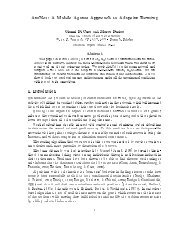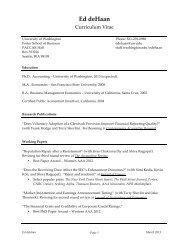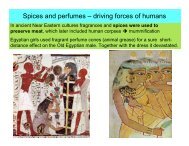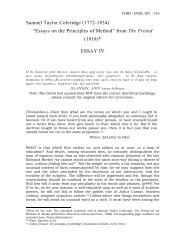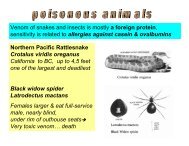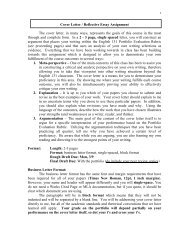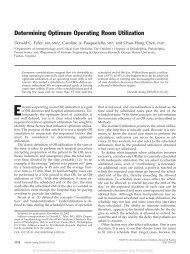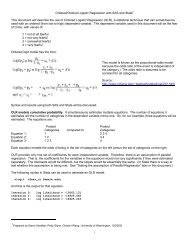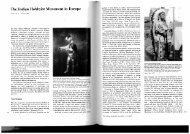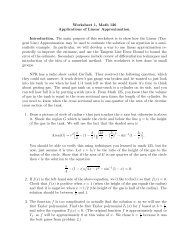The Lasting Presence of Gerard's Herball
The Lasting Presence of Gerard's Herball
The Lasting Presence of Gerard's Herball
Create successful ePaper yourself
Turn your PDF publications into a flip-book with our unique Google optimized e-Paper software.
writing, “…the root champed or chewed procureth spitting, and causeth water and flegme<br />
to run forth <strong>of</strong> the mouth, as Pellitorie <strong>of</strong> Spain doth” (p.378).<br />
In the worn pages <strong>of</strong> Gerard, I came upon another “old fashioned” plant, Jupiter’s<br />
Beard. With a head <strong>of</strong> flowers atop an erect, stiff, and bristly stalk (all in relief on the<br />
block and thus captured in detail in the print), this was not the Jupiter’s beard I knew<br />
(Centranthus ruber). <strong>The</strong>n I remembered a plant my mother-in-law gave me, from her<br />
rock garden. I called Catherine on the phone. Did she remember how she acquired it?<br />
“Well,” she said. “Edward took care <strong>of</strong> the garden, and you know, he was a great one for<br />
walking around the neighborhood, and if he saw something he liked, he’d take a sample<br />
<strong>of</strong> it.” Edward had collected Gerard’s Sempervivum, from the Latin semper, “always,”<br />
and vivo, “live.” <strong>The</strong> woodcut image <strong>of</strong> a plant, alive on the pages <strong>of</strong> Gerard’s <strong>Herball</strong>,<br />
had transformed into the memory <strong>of</strong> a man, alive forever in my garden.<br />
As I looked again at the anemone, considering the 17 th century observations <strong>of</strong> the<br />
same plant, I was reminded that the influence <strong>of</strong> the medicinal branch <strong>of</strong> plant study is<br />
also evident in the woodcuts used to illustrate Gerard’s herbal. Herbalists are concerned<br />
with all parts <strong>of</strong> a plant that are useful, including the roots. <strong>The</strong> woodcuts in the herbal<br />
almost always present plants singly and in isolation, and all potentially useful parts <strong>of</strong><br />
each plant are included in a drawing.<br />
V. Herbs and medicine<br />
A question arises for me at this juncture. Who else read Gerard’s <strong>Herball</strong>? Who<br />
might have plucked a flower, brought it into the house, and confirmed its medicinal<br />
properties in this book? My account so far indicates that the botanists and physicians left<br />
records—did rural people, women tending gardens, and working farmers read Gerard?<br />
10



